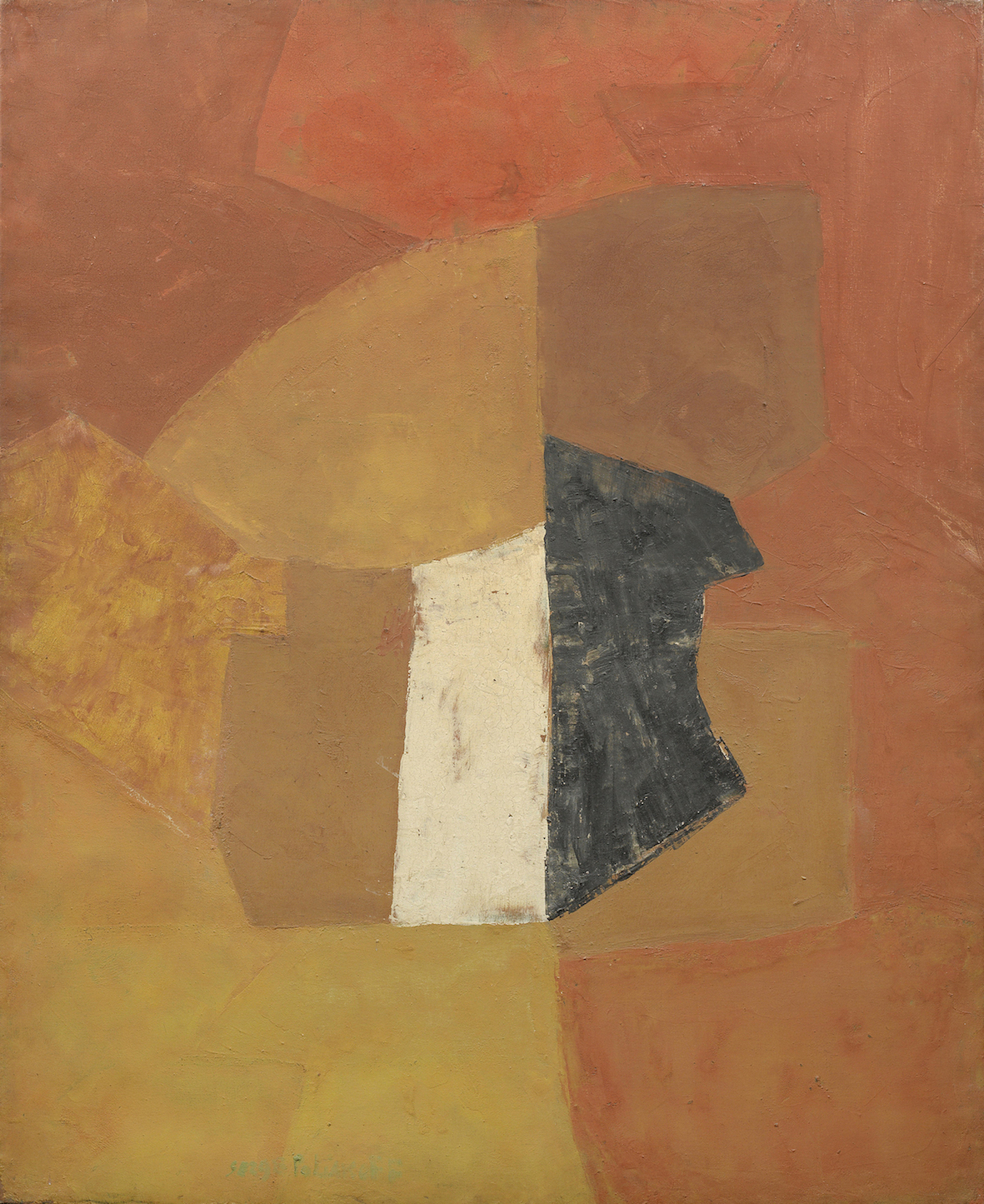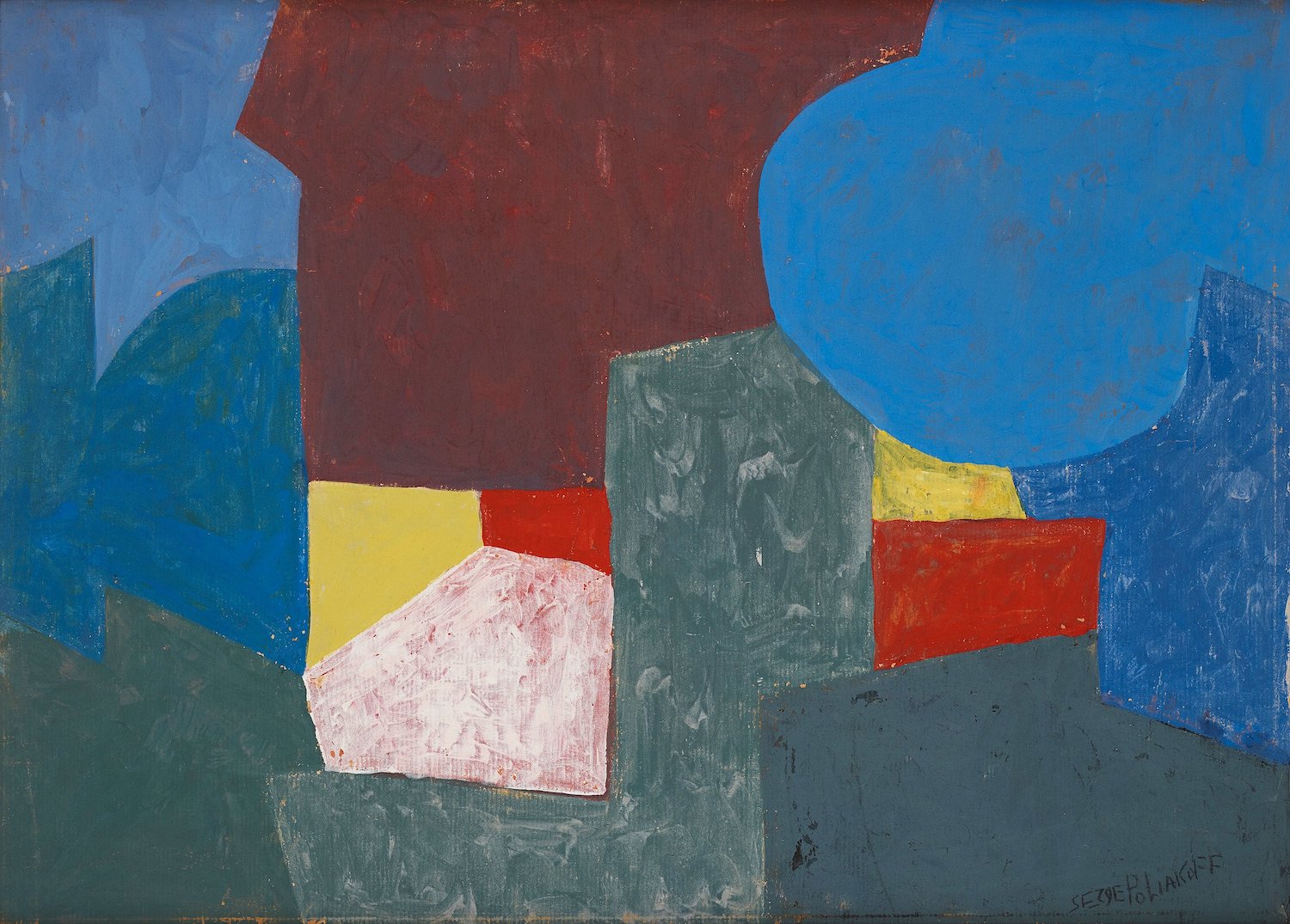Serge Poliakoff
|||||||||||
(Moscow, 1900 – Paris, 1969)
Serge Poliakoff was born at the beginning of the year 1900 in Moscow. He was the thirteenth child of a family of fourteen children. His father supplied horses for the Russian army and owned a racing stable.
In 1914 he began taking art classes and spent most of his childhood surrounded by religious figures that he saw in the church with his mother, as well as the active culture and literary salons of the Russian aristocracy of that period.
In 1918, to earn a living, he departed for Europe to play guitar for his aunt (a famous singer). In 1923 he finally arrived in Paris and began a long artistic development that lasted for twenty years.
In 1937 he met the Delaunays, whose artistic philosophy inspired his own artistic style. Two years later, he presented his first piece in Paris and was discovered by Kandinsky who stated: “for the future I bet on Poliakoff”. He then participated in several salons and by 1945 finally saw himself exhibiting several of his first abstract compositions. In 1947, he received the Kandinsky prize.
In the meantime, to sustain a living, Poliakoff composed a successful series of textile designs, but then stopped out of fear that this shift of style would affect his paintings and decided instead to play his guitar in Russian night clubs.
On several occasions, he then exhibited at the Denise René gallery and, starting from 1951, at the Dina Vierny gallery, after a fortuitous encounter in a Russian cabaret where Dina Vierny was replacing a singer.
Following this, in the 1950s and 1960s, Poliakoff was finally able to benefit from his success as an established artist with numerous exhibitions and prizes, as well as with his participation in the Biennale of Venice in 1962. He died in 1969, just before his major retrospective at the Modern Art Museum in Paris.
Poliakoff is considered as one of the great abstract masters of the School of Paris. Deeply influenced by Russian icons, he constantly tried in his work to retranslate that same emotion. This iconic side of his work can be observed in the admiration that he felt for Malévitch’s Carré noir sur fond blanc, which had a major impact on his work.
Poliakoff intends to express an existential presence in his work. Like most of the American artists of his generation (Rothko, Gottlieb, Newmann) he is in search of a pre-figurative spiritual primitivism. This can be seen in the harmonious balance of the shapes that punctuate his compositions whose entire soul relies on the vibrations and the intense color that leap out of the paintings. Serge Poliakoff did not look for novelty but rather for eternity by turning his work into truly divine images, icons of modern art.

Sans titre, 1955
Huile sur toile
100 x 81 cm

Untitled, 1954
Gouache sur papier
42.5 x 60.5 cm

